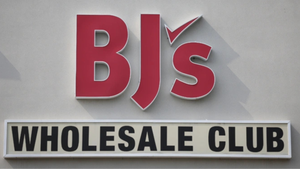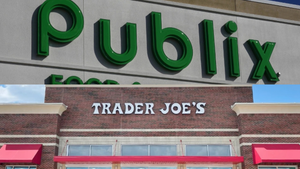Instacart stock drops on adjusted earnings outlookInstacart stock drops on adjusted earnings outlook
CEO Fidji Simo touts the growth of smart-cart technology adoption

Instacart stock plummeted more than 14% by mid-morning Wednesday following the release of its Q3 earnings report Tuesday that beat analyst expectations but gave a disappointing outlook for the coming quarter.
The San Francisco-based last-mile delivery company reported positive earnings of $0.42 per share on revenue of $852 million, beating analyst consensus estimates of $0.22 per share on revenue of $844.24 million, according to EarningsWhispers.com.
Meanwhile, gross transaction value (GTV) grew by 11% year over year to $8.3 billion, and the company’s 72.9 million orders represented a 10% year-over-year increase. The positive results, however, were not enough to allay investor fears about the coming quarter, according to analysts.
That’s due to Instacart’s Q4 forecast of adjusted EBITDA ranging between $230 million and $240 million, according to Investor’s Business Daily, which noted that analysts set expectations higher at $243 million for the coming quarter. Instacart’s GTV for Q4 ranges between $8.5 billion and $8.65 billion.
“This GTV outlook represents year-over-year growth between 8% to 10% even as we compare against last year’s strong holiday season, as we lap a meaningful sequential step up in incentive spend in the prior year quarter, and as we account for a small impact from Ahold Delhaize’s recent outage given we power deliveries for their owned and operated websites,” Instacart said in the Q3 report.
That outage was due to a cybersecurity breach on Nov. 8 that crippled Ahold’s Stop & Shop and Hannaford store, shutting down Hannaford’s website and disrupting deliveries at Stop & Shop and preventing the grocer’s pharmacies from processing debit and gift cards.
Instacart CEO Fidji Simo said in the earnings call that the delivery and tech company remains the category leader in both small basket fill-up orders, which make up 25% of the industry, and large weekly baskets, which make up the remainder of online orders.
“We are truly building a habit so that over time, customers end up spending their full grocery budgets with us,” she said. “While other platforms are selling some grocery items, they are not building customers’ grocery habits, which is critical to retaining customers with good economics.”
Simo emphasized Instacart’s focus on building on its retail integrations over the past year, such as “EBT SNAP, pickup, alcohol delivery, virtual convenience, loyalty integration, or enterprise solutions like Storefront Pro.”
“These integrations remain one of the most underappreciated parts of our business, and are really our secret sauce,” she said.
Simo also noted the growth of adoption of its smart-cart technology, Caper Carts, which Instacart announced on Monday has launched at Bowman’s Market, Maurer’s Market, Neiman’s Family Market, Soelbergs Market, and Queen’s Price Chopper.
Read more about:
InstacartAbout the Author
You May Also Like






